Articulation Activity – Story Telling Through Music
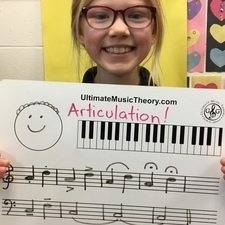
Articulation Activity - Story Telling Through Music
Articulation Activity - Articulation are signs that indicate the touch at which notes may be played. Articulation adds interest to the music by using a variety of different sounds.
Articulation communicates a sound that indicates how the composer would like to express their music.
I created this fun Articulation Activity to teach my students to see, hear and feel Articulation Marks.
I wanted to see if my students understood the "English Definition" of each Articulation Mark.
The results were very interesting! To set the scene for this Articulation Activity, I chose students who are in the Ultimate Music Theory Prep 1 Rudiments Workbook.
As I prepare many of my students for RCM Examinations, a few of these students are already working in the new Ultimate Music Theory PREP LEVEL Supplemental Workbook.
The Ultimate Music Theory Prep 1 Rudiments Workbook and PREP LEVEL Supplemental Workbook help students complete the requirements of the RCM Preparatory Level Theory as outlined in the 2016 Edition RCM Theory Syllabus.
Articulation Activity Step #1
I chose 6 of the common Articulation Marks:
- Staccato - detached
- Accent - a stressed note
- Legato - smooth
- Fermata - pause
- Tenuto - held, sustained
- Tie - hold for the combined value
Articulation Activity Step #2
I asked some students to provide me with definitions to (or examples of) the "definition" words. I wanted to see what their context was in understanding the standard definitions of these common Articulation Marks.
Here are some of the answers I received during Step #2 of this Articulation Activity:
- Detached: No clue. Never heard that word before. (So, I asked her what about "Separated"? The answer - My Parents got separated, then they get divorced.)
When I broke the head off my sister's Barbie and my mom had to detach it back on. (I tried so hard not to laugh at that!)
- Stressed: When Mommy gets mad because I'm fighting with my brother.
- Smooth: My brother says "smooth move" when he plays Nintendo, so it must be something good.
When mom buys the peanut butter without the peanut pieces in it, it's the smooth peanut butter.
- Pause: I don't know.
- Held: I held my sister's hand.
- Sustained: I don't know.
- Hold for the combined value: What does combined mean?
What an eye-opener for me! How was I going to teach these students to See, Hear, Feel and Write these Articulation Marks when they had no context for their definitions.
Articulation Activity Step #3
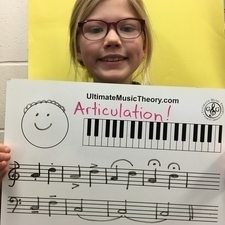
In the next step of the Articulation Activity, I reviewed with my students what these articulation signs looked like in music.
We used our Ultimate Music Theory Whiteboards to draw the signs.
- Staccato
- Accent
- Legato
- Fermata
- Tenuto
- Tie
Articulation Activity Step #4
Then we did a "Story Telling Through Sound" Activity! The students and I created music that matched a "Christmas Vacation Articulation Activity Story" that we created at our lesson.
In the Prep Level Supplemental Workbook, students learn HOW to compose! (Seriously! My most exciting moments this Teaching Session have been seeing the looks on my student's faces when they have composed their very first melody!)
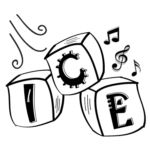 As taught in the Prep Level Supplemental Workbook, my students love doing an "ICE" Activity:
As taught in the Prep Level Supplemental Workbook, my students love doing an "ICE" Activity:
- Imagine the music telling a story or idea.
- Compose the music to express your musical idea.
- Explore the music. Add "So-La Sparkles" using dynamics and articulation to enhance the sound.
When you get the Prep Level Supplemental Workbook, you will meet "So-La" and "Ti-Do" - 2 amazing new friends who will take your learning and teaching to the next level! But, that is for another Blog!
Each Story was unique, but I am going to recreate the story base here, so that you can play this Articulation Activity with your students.
Articulation Activity - Staccato
Story: Mom was tired of listening to me say that I was bored, so she told me to go get dressed and then go outside to play. I was so excited, I hopped from stair to stair as I ran upstairs to get changed.
Story Telling Through Sound: The student played ascending staccato notes on the piano (or on the other instruments that I have in my studio!).
Articulation Activity - Accent
Story: Mom yelled at me to NOT run up the stairs hopping from stair to stair. So, when I came down the stairs, I banged each stair heavily with my feet so that she could hear that I was not hopping!
Story Telling Through Sound: The student played descending accented notes.
Articulation Activity - Legato
Story: Before I put on my boots, I made sure that my socks were not bumpy and lumpy because that hurts my feet. I pulled each sock up high from my toes to my knees, then ran my hands up the socks again to make sure they were smooth. No lumpy socks for me. I slid each foot down into each boot.
Story Telling Through Sound: The student played smooth sounds going up from "toe to knee" (one octave). Then the student played smooth sounds going down the octave (sliding into each boot).
Articulation Activity - Fermata
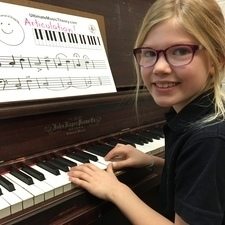 Story: I looked out the window and saw that my friend next door was skating on her back yard rink. The ice was so smooth, she glided from skate to skate. It was her first time skating this year so she wasn't very good at it...yet. Every time she fell, she would sit on the ice for a few moments, and then she would get back up and skate again! I thought about going skating, but I already had my boots on, so I decided to play in the snow instead.
Story: I looked out the window and saw that my friend next door was skating on her back yard rink. The ice was so smooth, she glided from skate to skate. It was her first time skating this year so she wasn't very good at it...yet. Every time she fell, she would sit on the ice for a few moments, and then she would get back up and skate again! I thought about going skating, but I already had my boots on, so I decided to play in the snow instead.
Story Telling Through Sound: The student played smooth skating sounds up and down until their friend "fell" (a review of our accent!). Then they paused on that note, holding it down longer, until they got up and "skated" again.
Articulation Activity - Tenuto
Story: I stepped out onto the snow. There was a bit of ice on top of the snow, so I made sure that each foot was firmly down, breaking through the ice and stepping deep into the snow until I touched the ground. Steadily and carefully, I walked the 4 steps on the porch, then down the 4 stairs. 4 more steps across the path and then I jumped into the pile of snow with a bang (staccato and accent review - my students love accents).
Story Telling Through Sound: The student "walked" with their fingers as we counted 3 "measures" of 4. Each finger held the note down for its full value, sustaining the sound so that we could hear we were not slipping and falling! (Teacher note, I knew they were at the snow pile when they jumped and "banged". My students also know how to "bang" without "hurting" the piano keys!)
Articulation Activity - Tie
Story: I made a snowball - it was at least 4 inches long! So I made another snowball. I had 2 snowballs that were 4 inches long! I put them together. My two 4 inch snowballs were now 8 inches long! I decided to make a wall of snowballs! How many snowballs could I put together before I got too cold and had to go inside?
Story Telling Through Sound: The student played 2 whole notes separately, counting to 4 for each whole note. Then we tied the whole notes together and they played the 2 tied whole notes (counting 1-2-3-4-1-2-3-4, since we have to start counting at 1 again for each snowball!).
Note to teacher: Set a "maximum" number of snowballs before you are too cold and have to go inside. I had one students who wanted a hundred snowballs tied together. Um, no...I decided that 6 snowballs was enough and then it was time to go back inside!
Articulation Activity Step #5
We then reviewed the definition of each of the Articulation Marks. WOW! Each and every single student who I played this Articulation Activity with was able to provide me with a verbal and "physical" (on the piano) description of each Articulation Mark.
Pre-Teaching Story Telling Through Sound
My students didn't realize that I had an ulterior motive.
Not only did I want to make the lesson fun, I wanted to pre-teach Story Telling Through Sound.
As my students finish their Prep 1 Workbook and the Prep Level Supplemental Workbook, they will then get the Level 1 Supplemental Workbook.
In the Level 1 Supplemental Workbook, students will be learning how instruments create sound.
They will be exploring how these sounds enhance the story line and the characters in Camille Saint-Saens "Carnival of the Animals" and Sergei Prokofiev's "Peter and the Wolf".
Again though, that is for another Blog!
I would love to hear if you played this Articulation Activity with your students!
Ultimate Music Teachers Membership
♪ LEARN ♪ PLAN ♪ TEACH ♪ GROW
The One & ONLY Ultimate Music Teachers Membership
To Become A UMT PRO!
Your Success Path Starts Here - Go To TeachUMT.com Today!
Keep on Learning... With a Smile and a Song!
Shelagh McKibbon-U'Ren
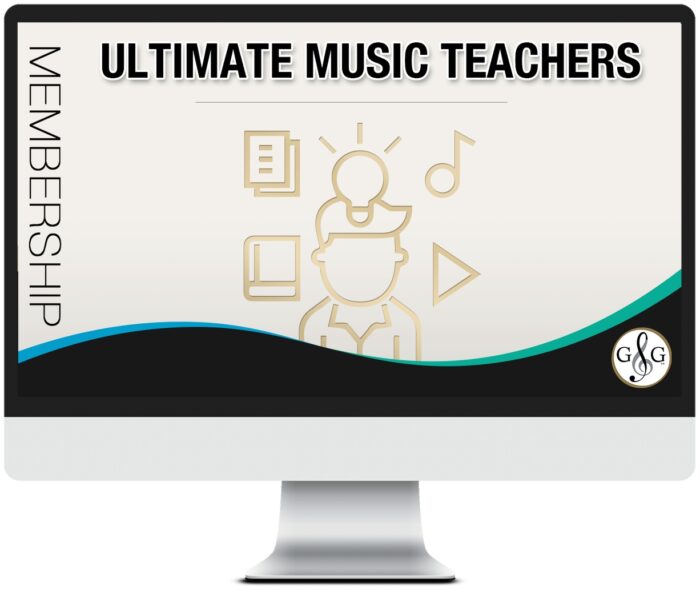


Thank you for sharing this awesome idea!
If you have students who are excited about learning handwriting in school (I know, a dying art, but that’s a topic for another day), have them use the whiteboard to print their name and then to write their name in cursive. Ask them to notice when their pen left the whiteboard. Printing is detached. Handwriting is legato.
Thank you so much for the teaching idea, this is just awesome!
Thanks so much for sharing this teaching idea. I can’t wait to implement this in my UMT class.